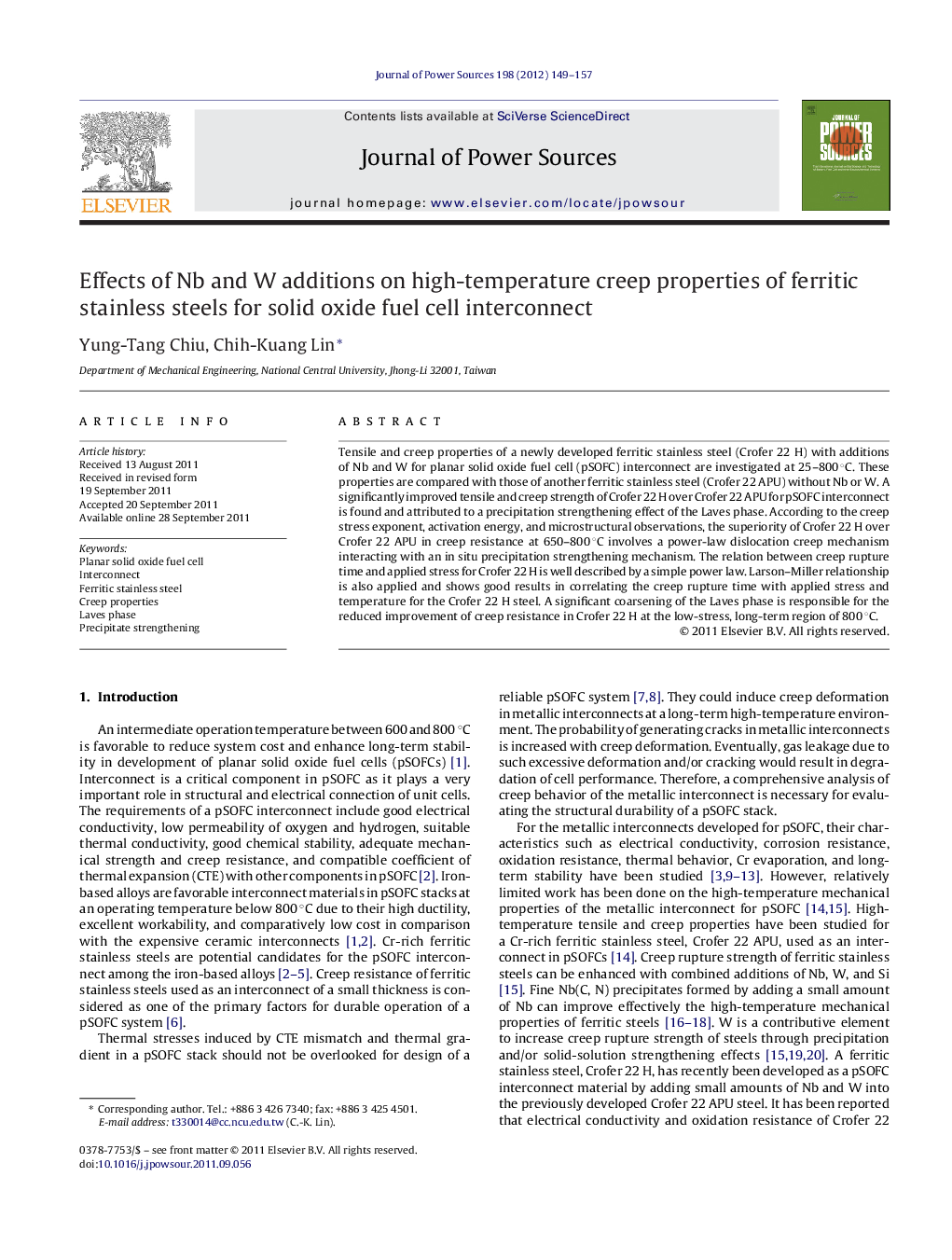| Article ID | Journal | Published Year | Pages | File Type |
|---|---|---|---|---|
| 1288404 | Journal of Power Sources | 2012 | 9 Pages |
Tensile and creep properties of a newly developed ferritic stainless steel (Crofer 22 H) with additions of Nb and W for planar solid oxide fuel cell (pSOFC) interconnect are investigated at 25–800 °C. These properties are compared with those of another ferritic stainless steel (Crofer 22 APU) without Nb or W. A significantly improved tensile and creep strength of Crofer 22 H over Crofer 22 APU for pSOFC interconnect is found and attributed to a precipitation strengthening effect of the Laves phase. According to the creep stress exponent, activation energy, and microstructural observations, the superiority of Crofer 22 H over Crofer 22 APU in creep resistance at 650–800 °C involves a power-law dislocation creep mechanism interacting with an in situ precipitation strengthening mechanism. The relation between creep rupture time and applied stress for Crofer 22 H is well described by a simple power law. Larson–Miller relationship is also applied and shows good results in correlating the creep rupture time with applied stress and temperature for the Crofer 22 H steel. A significant coarsening of the Laves phase is responsible for the reduced improvement of creep resistance in Crofer 22 H at the low-stress, long-term region of 800 °C.
► Ferritic steel with Nb/W has better tensile/creep strength for SOFC interconnect. ► Improved tensile/creep strength is caused by Laves phase precipitates. ► Improved creep resistance at 800 °C is reduced by a precipitate coarsening effect. ► Creep life is well described by a simple power law and Larson–Miller relation.
